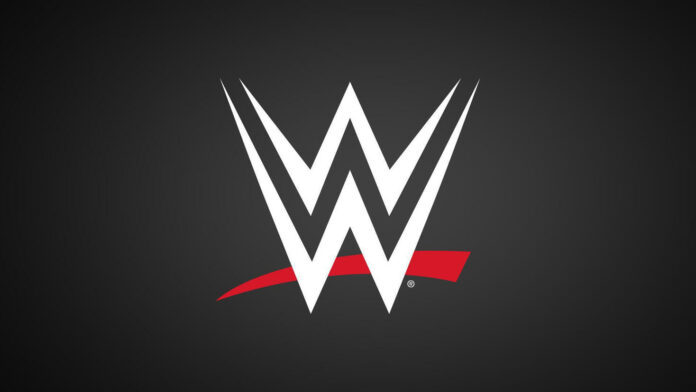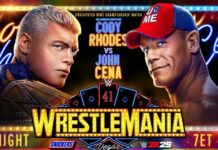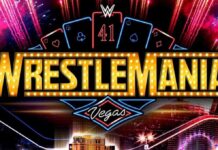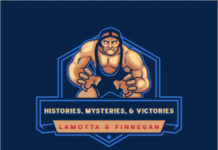
“History is written by the victors.” -Winston Churchill
It’s a cliche, but sometimes cliches are cliches because they’re true. It’s not surprising that after Vince McMahon put the territories out of business and bought WCW for pennies on the dollar that the narrative of the industry within the last 25 years, specifically since he acquired the video libraries of every major regional group in the United States, minus the St. Louis footage, had a WWE spin to it.
There’s a reason that Triple H had to pin Sting at Wrestlemania 31, the war might’ve been over 15 years prior, but not to McMahon. So, most of the time, you have to take a WWE production with a grain of salt in some ways since there will always be a McMahon-based lens to examine what took place throughout the decades that shaped the industry. Per that lens, the National Wrestling Alliance was only a successful regional group that didn’t find success outside of the south, despite the fact that in 1986, the organization had a touring schedule that zigzagged around the country, with Chicago as one of its better drawing cities. The fact that Crockett Promotions spent itself into bankruptcy based on the unnecessary $9 million dollar purchase of Mid South Wrestling in 1987 and buying a private plane is glossed over in favor of the notion that “worldwide Hulkamania was just too much for the rasslin company” in most previous documentaries. The story of WCW was that Eric Bischoff only had a hot period because he used Vince’s stars that he bought with Ted Turner’s checkbook, not the concept that without the NWO to push the business forward, Vince would’ve continued to rely on lumbering super heavyweights since that was his typical fallback plan.
However, the recent “Becoming A Spectacle” documentary about Wrestlemania 9 that was added to the Peacock streaming service since it was held in Las Vegas, the same city that hosted this year’s Wrestlemania, took the concept of re-writing history to a completely different level.
First, it should be noted that despite the completely fictitious claims that are made throughout most of the two-hour production on the 1993 event, it’s still worth watching because of the amount of extremely interesting backstage footage that was shot at the time. In the opening sequence, it’s mentioned that the WWE video archive has more than 575,000 hours of footage, which is incredible on its own and then you have to consider how many hours are added to the total with new programming each week. It’s a truly staggering amount of pro wrestling history and it also makes you wonder what other gems are in the vault that someone in the office either hasn’t cataloged yet or simply hasn’t realized the significance of some of the obscure footage that the company has the rights to after several purchases of different video libraries over the years.
An example of this would be “The Last Battle of Atlanta,” the predecessor to the HIAC match that took place in 1983 in the Georgia Championship Wrestling organization between “Wildfire” Tommy Rich and Buzz Sawyer. The bout was considered a “holy grail” and outside of photos from magazines, at one point, the match was thought to be lost to time because some territories used a master tape to record over each week to save on production costs. For several years, the diehard fans that were tape traders tried to use the modern technology of the internet to attempt to track down anyone with video footage of the contest. Randomly, about a decade ago, the match was added to the WWE Network’s “hidden gems” section, and many fans were stunned that the footage of the historic bout was more or less undiscovered in the WWE vault for years. So, again, it makes you wonder what other rare footage hasn’t seen the light of day yet? Speaking of the WWE vault, their digital media team has dabbled with rare footage on the WWE Vault Youtube channel and given the fan response, it proves that there’s an audience for the more obscure footage that might cater to more of the diehard demographic.
Essentially, the main reason that I decided to pen this article was to sift through the WWE spin to give a more accurate context to the legitimately compelling video footage that chronicled Wrestlemania 9 in Las Vegas.
It must be said that the behind the scenes footage and how the performers shuffled around throughout the event, particularly in rehearsals or before the event started was really neat. Furthermore, the production team that usually isn’t seen in these types of documentaries provided a lot of compelling insight into how these shows come together during that era. How they planned to transform a parking lot into a reasonable wrestling venue and the logistics behind it were some of the most interesting portions of the presentation.
That said, some of the outright whoopers that made the cut for this narrative would almost make Hulk Hogan blush with his typical outlandish tales. It was implied that Wrestlemania 9 was brought to Las Vegas because of the success of the McMahon-promoted “Sugar” Ray Leonard/Donny Lalonde fight that was held at Caesars Palace previously. This simply wasn’t the case, as the Ray Leonard bout was considered a dud, which is why Vince never promoted boxing again. It was going to take big bucks, more than Vince was used to paying his wrestlers, to secure a top challenger for Leonard. The choice of Lalonde was a contender, but he had beaten tomato cans previously so he wasn’t considered a threat to the more well-known Leonard, and the buyrates for the pay-per-view reflected that. More importantly, the “Sugar” Ray event that Vince promoted took place almost five years before Wrestlemania so it’s doubtful that its success or failure would’ve been enough to be the main reason Caesars Palace was willing to host a pro wrestling event.
One of the WWE executives explained that the company only moved 2,000 tickets in the opening week, with the claim that sales were soft based on the fact that Hulk wasn’t used in the original advertisements for the show. The truth is, and this has been proven throughout different eras of the business, Vegas isn’t a wrestling town because of how much other competition there is for the entertainment dollar. Gambling, stage shows, and hookers are all looking to get a piece of the pie when tourists show up in the city in the desert. The AWA couldn’t draw at The Showboat in the 80s for their ESPN tapings, the same way that the infamous WWA couldn’t draw for their ill-fated attempt to run an event in Vegas in 2002.
The lack on interest in Wrestlemania in 1993 wasn’t because of no involvement from Hogan, but it was the same reason that Hulk wasn’t there in the first place. The steroid and ring boy scandals of the early-90s not only caused The Hulkster to distance himself from the WWF, but it also hinders the organization’s popularity. All things considered, 1993 is usually seen as the low point of the slump of the business in that era. The Peacock documentary conveniently leaves out that Hulk pursued movies because of the negative publicity of the industry, not because he was going to be the next John Wayne, even if that somehow becomes the story he tells if it’s asked today.
The other major fabrication that the video editors tried to push with this presentation was the concept that Wrestlemania 9 was somehow the launch of the spectacle of the event, which was probably the talking point as a way to add some extra hype for this year’s event because it was in the same city. The entire premise of Wrestlemania was to sell the spectacle, which was Vince McMahon’s marketing strategy with the national expansion. He sold the sizzle of sports entertainment, not the substance of pro wrestling. The Wrestlemania brand had Mr. T, Muhammad Ali, Cyndi Lauper, William “The Refrigerator” Perry, Alice Cooper, and several other celebrities involved in the show before 1993. It would be closer to reality that the over-the-top visual presentation at WM 9 was probably an attempt to soften the company’s image after the previously mentioned negative publicity.
Surprisingly, this presentation acknowledged some of the truths that I thought would’ve been avoided or skipped over. Of course, there’s the rumor that Randy Savage punched Hogan in the eye a few days before the show and that’s why he showed up with stitches in his face. To my knowledge, the company hasn’t officially acknowledged the possible incident until now. Of course, Hogan had a different story, but he always seems to have a different story, even if it was a story that he told before. Along with that, it was interesting that the documentary more or less acknowledged how goofy that decision was for Hulk to win the title at the conclusion of the show just to boost his ego. You can make the augment that it’s part of the marketing process to put a positive spin on everything possible so it’s very rare that the WWE acknowledges its own mistakes.
But, as Churchill said, the winners get to write the history books, and WWE has certainly done that when it crafts the narrative of the business with its extremely well produced documentaries. This one just happened to be more off the mark than usual, as it wasn’t the typical spin that you can expect from most entertainment productions, but rather a complete re-write of Wrestlemania 9.
The truth is, Wrestlemania 9 was almost unanimously panned as the worst WM event of all time, with only one truly good match on the entire card, with The Steiner Brothers vs. The Headshrinkers as the only standout. The Bret Hart/Yokozuna match never got a chance to get into second gear and was ended early, as Bret discussed in the documentary since Yoko went into the finishing sequence before it was scheduled. Jorge Gonzalez is praised by more or less everyone as a very nice guy, but god bless him, he was so tall that him stumbling around in the ring was just terrible. The event is known for its lack of entertainment value, and Hulk’s ego trip to win the title to return to the company before he left again a few months later, not for bringing spectacle to the Wrestlemania brand.
What do you think? Share your thoughts, opinions, feedback, and anything else that was raised on Twitter @PWMania and Facebook.com/PWMania.
Until next week
-Jim LaMotta
E mail [email protected] | You can follow me on Instagram, Facebook, & Threads @jimlamotta89







